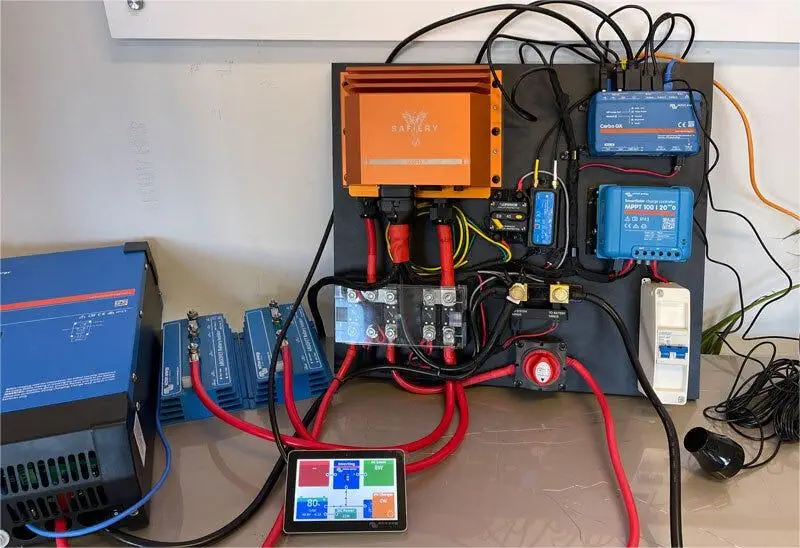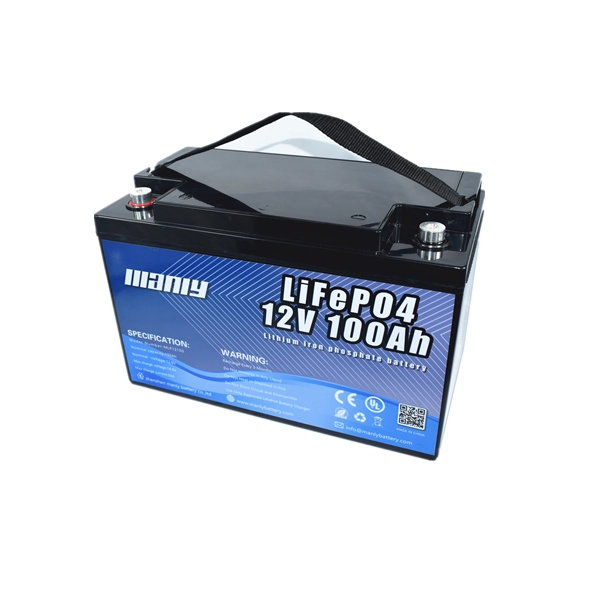2024 Ultimate Marine Battery Voltage Guide
Table of Contents

How to Test Marine Battery
Understanding the Importance of Battery Testing
For any boater, ensuring the health and functionality of your marine battery is crucial. Regular testing of your marine battery is not just about maintaining power; it's about ensuring safety and reliability when you're out on the water. This guide will walk you through the process of checking and testing your marine battery, using tools like a multimeter, to keep your maritime adventures trouble-free.The Basics of Marine Battery Test
- Why Test Your Battery? Regular testing helps you understand the condition of your battery and identify any potential issues before they become significant problems. It's a proactive way to ensure your battery is always ready when you are.
- Tools for Testing: The most common tool for this task is a multimeter, also known as a VOM (voltage-ohm-milliammeter). Multimeters are available in both analog and digital formats, with digital versions being more user-friendly and providing more accurate readings.
Step-by-Step Battery Testing Process
- Preparation: Before testing, charge your battery fully. This ensures that you get a clear picture of its maximum capacity and health.
- Setting Up the Multimeter: Connect the multimeter probes to the battery terminals – red to positive and black to negative. Ensure you correctly identify the terminals to avoid any mishaps.
- Reading the Results: Once connected, the multimeter will display the battery's voltage. A healthy, fully charged battery should show a voltage slightly higher than its rated capacity. For example, a 12-volt battery should show around 12.6 volts when fully charged.
- Interpreting Voltage Readings: If the voltage reading matches or is lower than the battery's rated capacity, it may be a sign that the battery is weakening. In such cases, consider replacing the battery or seeking professional advice for rejuvenation or repair.
Additional Checks for Battery Health
Apart from voltage testing, you can also check for:- Physical Damage: Inspect the battery for any signs of physical damage or wear.
- Clean Terminals: Ensure the terminals are clean and free from corrosion.
- Secure Connections: Verify that all connections are tight and secure.
Marine Battery Voltage: Key to Optimal Performance
The Importance of Correct Battery Voltage in BoatingFor anyone who enjoys the waters, understanding and maintaining the correct voltage of your marine battery is crucial. The voltage level of a marine battery not only indicates its health but also ensures that your boat operates smoothly and reliably. This guide will explain how to check the voltage of your marine battery and what those readings mean.Checking Marine Battery Voltage: What You Need to Know- Ideal Voltage Range: A healthy marine battery typically shows a voltage between 12.6 to 12.7 volts. This range is considered optimal for ensuring your battery is performing well.
- Testing the Resting Voltage: To accurately measure your marine battery's voltage, it should be tested after sitting idle for a while. Testing right after charging can give false readings. For the best results, leave your boat or watercraft turned off overnight and measure the voltage the next morning before any use or charging. This gives you the battery's resting voltage, which is a reliable indicator of its health.
- Safety Precautions: When preparing to test the voltage, locate the battery, which might be in the engine bay or another area as specified in the owner’s manual. Ensure that the terminals are exposed for testing, but be cautious. It's important to avoid touching both terminals with any metal object to prevent a short circuit.
- Temperature Effects: The lifespan and self-discharge rate of a battery are affected by temperature. Batteries stored in higher temperatures discharge faster and have a reduced lifespan. Conversely, lower temperatures can extend battery life but may reduce capacity.
- Self-Discharge and Storage: Marine batteries gradually lose charge when stored, with the rate of discharge varying based on type, age, and temperature. New AGM batteries generally have the lowest discharge rate. To prevent damage, it's advisable to keep a trickle charge on the batteries, particularly if they are not in regular use.
- State of Charge (SoC): You can determine the SoC by measuring the voltage. A fully charged 12-volt battery should show around 12.7 volts. At 50% charge, the voltage drops to around 12 volts.
- Depth of Discharge (DoD): This is the converse of SoC and is crucial for understanding how much energy has been used from the battery.
- Use of Hydrometers: For batteries where this is possible, a hydrometer can measure the specific gravity of the acid, providing another method to gauge the battery's charge level.
- Storage on Concrete: Contrary to the old myth, modern batteries can be safely stored on concrete surfaces. This myth originated when battery cases were made of wood and asphalt, which is not the case with contemporary batteries.
- Above 12.7 Volts: Indicates the battery is fully charged.
- 12.6 - 12.7 Volts: Shows a healthy and functional battery.
- Below 12.6 Volts: Suggests the battery is undercharged or possibly deteriorating.

Testing Your Marine Battery with a Multimeter
A Step-by-Step Guide to Testing Marine BatteriesTesting your marine battery regularly is crucial to ensure its reliability and longevity. A simple and effective way to perform this test is by using a multimeter, a tool that measures voltage, current, and resistance. Here's a straightforward guide to help you correctly test your marine battery.Preparing for the Test- Setting up the Multimeter: First, set your multimeter to measure DC voltage. This setting is typically marked with a V alongside a dashed and a solid line. Adjust the dial to 20 for an accurate voltage reading between 0-20 volts.
- Connecting the Multimeter: Attach the red probe of the multimeter to the battery's positive terminal, usually marked with a red color and a + symbol. Similarly, connect the black probe to the negative terminal, indicated by a black color and a – symbol.
- Fully Charged Battery: A healthy, fully charged marine battery should show a reading between 12.6 and 12.7 volts. Some AGM batteries may even show up to 12.8 volts.
- Half-Charged and Flat Battery: A reading of 12.4 volts indicates a half-charged battery, while 12.2 volts or lower suggests the battery is flat or discharged. It's crucial to avoid letting your battery drop below these levels, as it can lead to issues like sulphation.
- Minimizing the Impact: If your boat is used regularly or connected to mains power, these effects are usually minimal. However, infrequent use or short journeys can exacerbate this drain, affecting battery performance and lifespan.
- Testing After Charging: If you suspect parasitic loss, fully charge the battery and test it after letting it rest overnight. This will give you a clear indication of any underlying issues.
- Disconnect or Remove the Battery: When storing your boat, either disconnect the battery or remove it entirely to prevent unnecessary drain.
- Maintain Power Supply for Long-Term Storage: If storing your boat in water for an extended period, ensure you have the correct power facilities to keep the battery charged and the vessel safe.




















